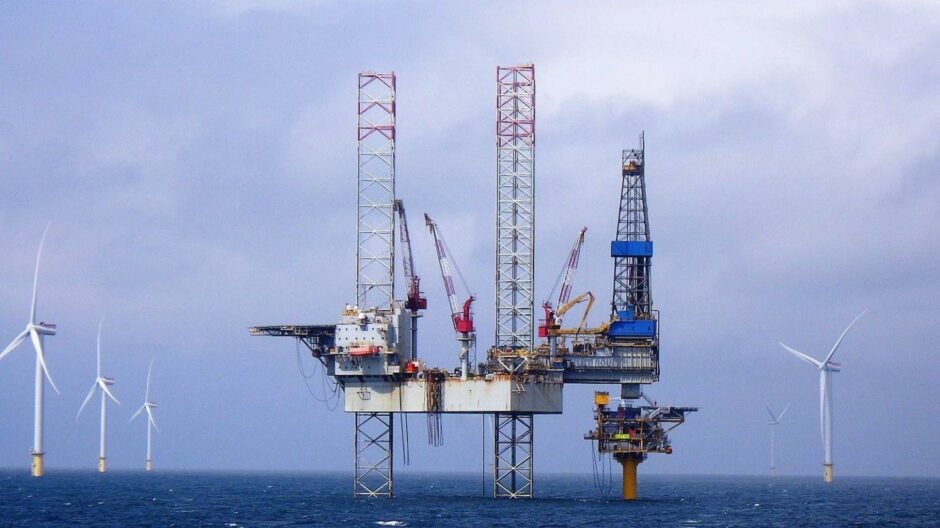 © Supplied by IOG
© Supplied by IOG IOG (AIM:IOG) has again cut its production guidance and will now suspend one of its Southwark wells to deliver first gas on schedule, after fluid losses slow drilling efforts.
In a 19 October operational update, the southern North Sea producer said it had suffered “extensive drilling fluid losses” in the one section of the Bunter sandstone formation where its Southwark A1 well is being drilled, forcing it to suspend operations for the time being.
At the same time, output from existing Saturn Banks fields has been constrained by reservoir challenges and will be further curtailed by a planned shutdown of the Saturn Banks pipeline, forcing the company to again revise down its production guidance for the remainder of the year.
Having reached the Bunter shale, IOG said further losses were encountered while drilling out a 9-5/8″ casing shoe, though it stressed this has “no bearing” on the Southwark reservoir itself, which lies well below this section.
IOG said the losses had not yet been sufficiently resolved to drill safely and the resulting delays have reduced the time available before the scheduled arrival of a hydraulic stimulation vessel in several weeks’ time.
Chief executive Andrew Hockey added: “Drilling the Southwark A1 well has continued to be very challenging with further fluid losses at the base of the Bunter Shale. To preserve the opportunity to deliver first gas in this quarter, we have decided to suspend operations on A1 in order to ensure that A2 stimulation work proceeds in the scheduled window.
Based on the current schedule and subject to further operational risks, IOG estimates first gas would be achievable by mid-December. 2P resources at the field are thought to amount to around 71 billion cubic feet (bcf).
After that point, Mr Hockey said, work would resume with a view to completion and production from A1 after A2 is onstream.
It’s the latest in a series of drilling setbacks at the field, after “rig stability issues” also forced the unit to halt work last year.
Production guidance
Meanwhile, IOG’s producing fields – Blythe and Elgood – have also faced challenges.
Blythe production has been constrained by liquids handling capacity at the Bacton terminal and the need for offsite storage, processing and disposal of saline aqueous liquids being produced from the H1 well.
Reservoir pressure data from the first six months of production has also indicated the well lies in a reservoir compartment which is “materially baffled” from the central and northwest areas of the field. As a result, IOG said the well will ultimately recover an estimated 29 bcf of resources, compared to the management estimates which put 2P reserves at 42.5bcf.
It is another setback for the field, which already suffered from a chemical injection fault that forced production offline within weeks of first gas.
Over at Elgood, the decline in flow rate from has been “faster than anticipated”, with production recently falling below 10 million cf per day and further declines expected by the end of the year.
New analysis indicates that gas is not flowing across the though an intra-field fault to the wellbore as expected, IOG said.
“As a result, the most likely ultimate recovery from the field is now assessed to be 7.5bcf, of which approximately 4bcf has been produced to date,” the update adds.
Combined flow rates from the two fields have averaged 28.6 million cf per day since the end of June, at a volume weighted average price of 258 p/therm.
Work is also progressing to connect the Saturn Banks pipeline to the Southwark platform, supported by the Seven Atlantic DSV.
However, a defective 6″ valve means the pipeline will need to be depressurised to connect the outer section safely to the manifold. IOG expects to suspend production from the Saturn Banks fields in late October for approximately four weeks, which will include the November Bacton terminal’s annual shutdown period.
The cumulative result is a revision to the company’s average gross production rate over the second half of 2022, from 30-50 million cf per day to 22-28 million cf per day.
It is the second cut to the firm’s guidance in a matter of months, with production having already been revised down from 45-60 million cf per day in August.
Assessing the update, research analyst Ashley Kelty of Panmure Gordon suggested the “grim update” would “do little to reassure investors as to the upside potential of the stock.”
“With delays and operational issues becoming the norm for IOG, the resource downgrade does little to suggest confidence in management to meet objectives,” he added.
